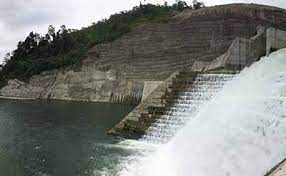Costa Rica will host the “World Hydropower Congress” in September. Faced with this call, leaders of organizations and environmental fighters from different continents decided to form the Global Movement of Rivers and Peoples, which will analyze actions before and after the World Congress. “La Movida Global” is part of the global campaign in defense of rivers and against the proliferation of new mega hydroelectric projects.
What do the representatives of “La Movida Global” in Costa Rica say?

Raquel Bolaños, as a member of the Living Rivers Movement of Costa Rica, emphasized that the congress activity “is an attempt by the global hydroelectric industry to legitimize itself in front of society, selling us the idea of hydroelectric energy as clean energy.
However, this could not be further from reality and this goes against extensive scientific evidence that demonstrates both the social and environmental damages and impacts of dams, this includes the displacement of populations, loss of biodiversity and even a significant contribution of dams to global warming.”
Subsequently, Alberto Gutiérrez, Geographer of the University of Costa Rica, made it clear that the Global Movement is the response that social and environmental organizations from all continents give to the World Hydropower Congress. Today, nothing is green, clean, or sustainable when developed by indiscriminately exploiting ecosystems, starting with more than half of the rivers on the planet.
According to official data from the Ministry of Energy of Argentina:
Hydroelectric energy contributes to more than 16% of the total electricity consumed in the world, “constituting a fundamental source for any country”. Globally, it is estimated that only 30% of the identified hydroelectric potential has been exploited, which is why the sector has great growth potential.
Countries such as China, the United States, Brazil and Canada are the world’s largest hydroelectric producers, and together they generate more than 50% of the world total. However, among the countries recognized for their environmental and social welfare policies are Norway, Sweden or Canada, which have hydroelectric energy as the source that provides most of their electricity.
Actions in Costa Rica
In the year 2,020, the Environmental Commission in the Legislative Assembly ruled the bill of Law 20,212 called: “Law for the Integrated Management of Water Resources”. According to experts, the Law lacks substantive advances in the protection of sources and bodies of water that eradicate the actions of overexploitation, hoarding and contamination.
Regarding the subject, we highlight what geographer Dany Villalobos told TCRN, who was a member for five years of the Alliance of Communities for the Defense of Water in Puntarenas and is currently president of the Costa Rican Federation for Environmental Conservation.
Villalobos stressed that “to protect water in Costa Rica, it has taken a lot -the will- mainly by the State Administration to correct gaps that exist not only in the legislation, but also in the administrative issue through the regulatory or Decrees.
Therefore, important advances in the protection of water have stalled, for example of rivers that continue to be exposed to exploitation of up to 90% of the flow, leaving several cases of rivers that are already legally dry due to the granting of harvests that they overexploit the natural flow that these bodies of water have and this is also related to a policy of disregard for water”.
Some of the struggles in Costa Rica
Among one of the struggles that have been maintained on the part of representatives of environmental organizations, we emphasize that of the San Rafael River in San Pedro de Pérez Zeledón in the South Zone of Costa Rica, it must be remembered, which lasted for six years and medium, it was the longest of the fifteen private hydroelectric projects that were proposed in the main rivers of the south between the years 2013 to 2015.
Previously, the same thing happened in communities near the San Rafael River: In the Chirripó Pacífico, Peñas Blancas, San Pedro, Convento, Sonador, Volcán, Ángel, Cañas and Canasta rivers, where a local commission of people from communities and social organizations was formed, who have been characterized by having a horizontal hierarchical structure in decision-making.
All have shown solidarity, supporting actions to put pressure on the authorities and finally get the Minister of the Environment to reject the last of the permits that the company needed to start works. We will be attentive then, of what the Congress will be and the opinion of those who make up the Global Movement after the activity.

